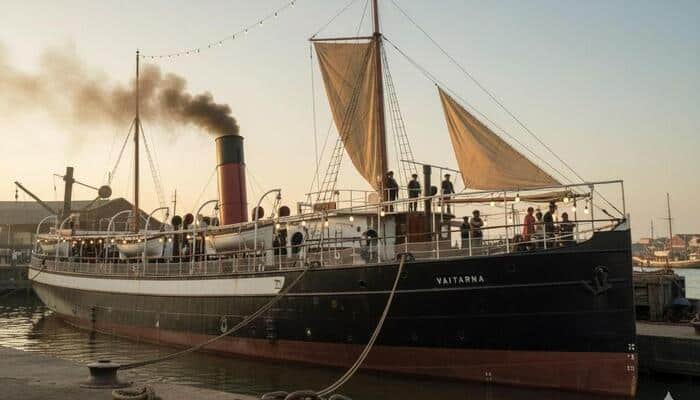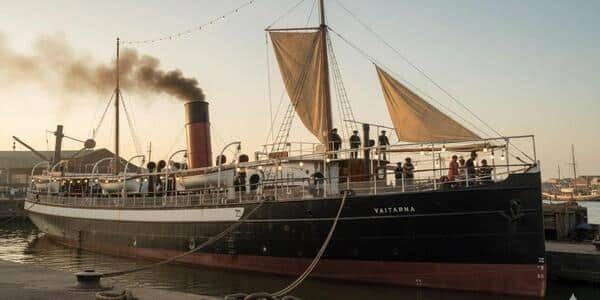
The Lost Legend of the S.S. Vaitarna
Long before the RMS Titanic captured the world’s imagination, India suffered a maritime tragedy that has largely faded from collective memory — the sinking of the S.S. Vaitarna on November 8, 1888. Known lovingly as “Vijli” (meaning “electric”), this steamship symbolized progress and modernity in late 19th-century India. Yet, her fate became one of the darkest chapters in the nation’s maritime history.
A Ship Ahead of Its Time
Built by the Grangemouth Dockyard Co. Ltd. in Scotland and launched in 1885, the S.S. Vaitarna was a technological marvel of her era. Constructed with steel and equipped with electric lights, she stood as a beacon of innovation.
The vessel measured 170.1 feet in length, 26.5 feet in breadth, and 9.9 feet in depth. With three floors, twenty-five cabins, a single funnel, and two masts, she was designed to offer both functionality and comfort. Her compound steam engines, fitted with two cylinders measuring 21 inches and 30 inches in diameter and a 42-inch stroke, produced 73 horsepower — impressive for its time.
The Voyage That Never Returned
On that fateful November day in 1888, the S.S. Vaitarna departed Mandvi, a bustling port in Gujarat, bound for Bombay (now Mumbai). As the ship ventured into the Arabian Sea, a violent cyclone swept across the western coast of India. Caught in the storm, the Vaitarna struggled against ferocious winds and towering waves.
Within hours, the ship — along with more than 740 passengers and crew — vanished without a trace. No wreckage, no survivors, and no clear record of her final moments were ever recovered. The tragedy stunned Gujarat and echoed across India, yet over time, it faded into obscurity.
The Mystery That Still Haunts
Unlike the Titanic, whose story was documented and immortalized, the S.S. Vaitarna left behind little evidence. No official inquiry records survive, and her wreck has never been located. Oral histories from Gujarat’s Kutch region recall stories of the doomed “Vijli,” describing eerie lights flickering on the sea that night — believed by locals to be the ship’s spirit lost forever.
The incident remains a somber reminder of the era’s maritime vulnerabilities and the unpredictability of nature.
Remembering India’s Maritime Past
The story of the S.S. Vaitarna is not just about a shipwreck; it reflects a period when India was navigating the tides of modernization and colonial transformation. Remembering this forgotten disaster honors the hundreds who perished and reclaims an important, though overlooked, chapter in India’s history.
Over a century later, the S.S. Vaitarna continues to symbolize the fragility of human ambition before nature’s might — a poignant parallel to the Titanic tragedy that would unfold decades later.





